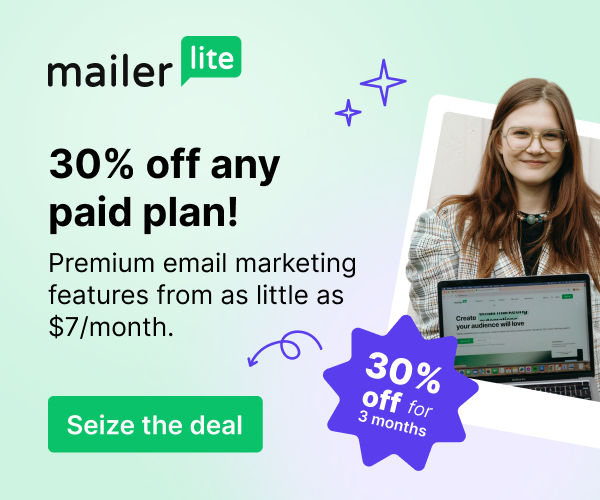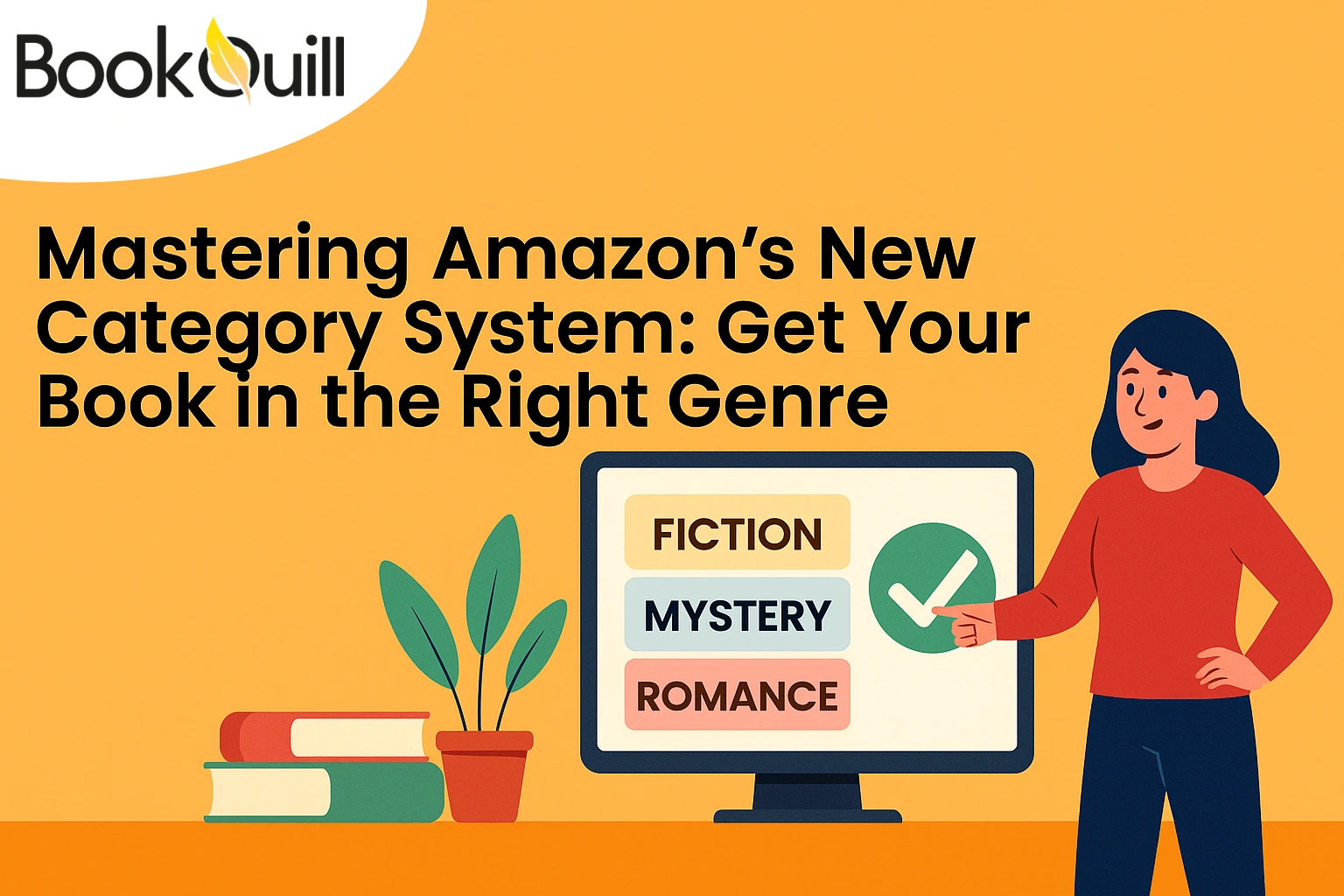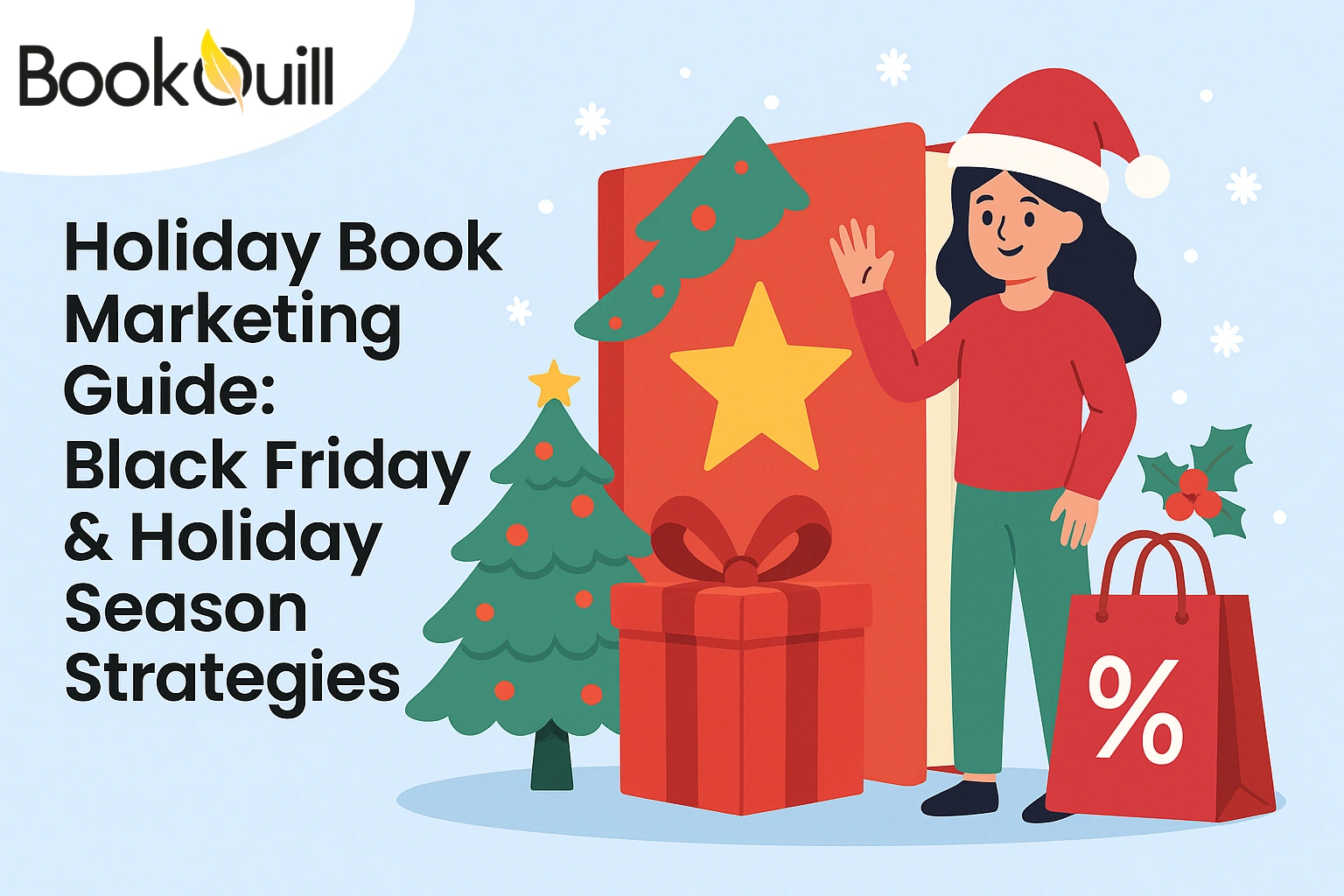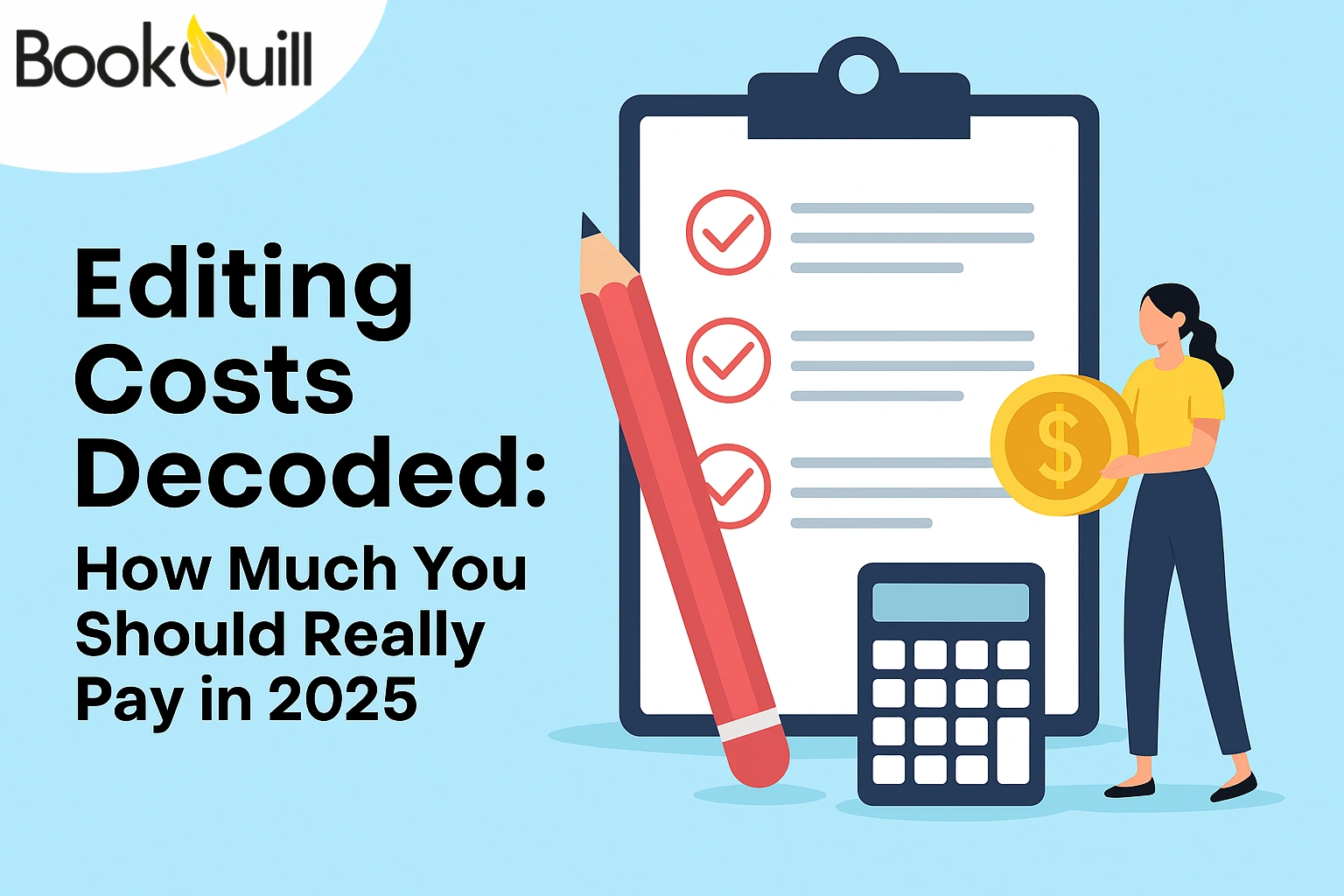Table of Contents
Explore Blogs
Trending on Ebook
Beyond Social Media: Why Email Newsletters Are an Author’s Secret Weapon in 2025
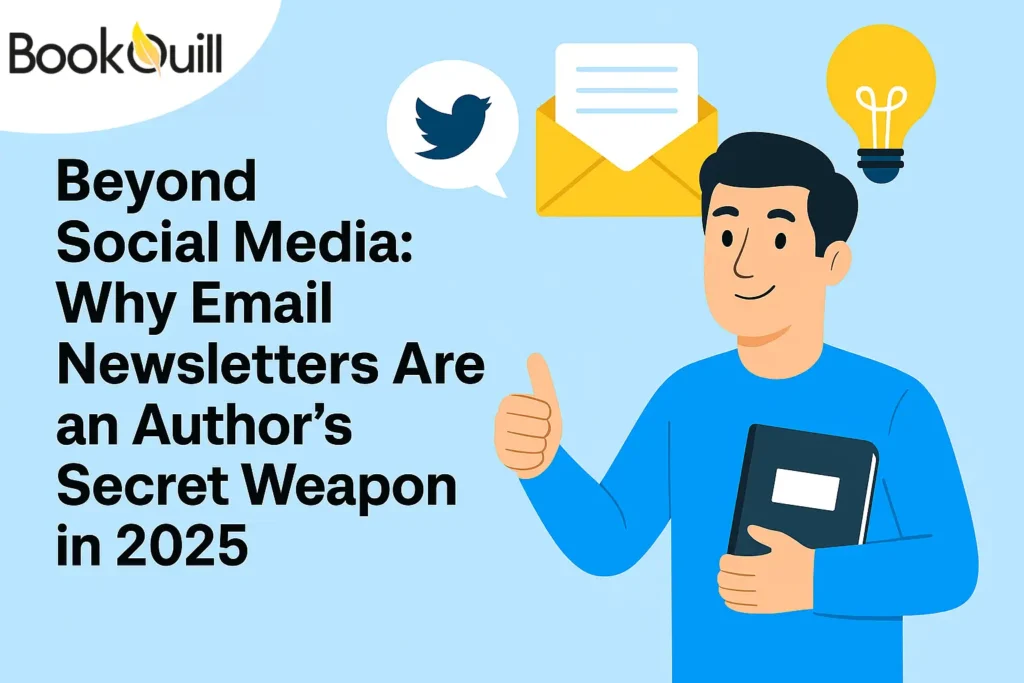
You have probably felt it too. The sinking moment when you put your energy into a perfect post for your book, refined the caption until it looked catchy, and hit publish! But it gets buried under the sea of cat videos, food reels, and vacation pictures. Maybe ten people see it.
In 2025, this isn’t usual; it’s actually the rule. Social media is loud, crowded, and still unpredictable. So, why do you think that happens?
Primarily because, in the new era of marketing, we are all surrounded by algorithms that have become our gatekeepers of our visibility. TikTok decides who sees our video. Instagram buries your post if it doesn’t get engagement in the first ten minutes. Twitter or X? Well, half the time it feels like posting into a void. For authors who need consistency to build momentum, that’s a nightmare.
And before you curse the algorithm, it’s not just about algorithms. There’s reader fatigue, too. Studies show that social media users are increasingly overwhelmed by the endless scroll of ads, memes, and hot takes. According to a research study, more than 41% of Americans reported actively reducing their social media use for mental health reasons. That means fewer chances for your book promo to break through the noise.
Meanwhile, trust is shifting. Data privacy concerns are driving readers to seek more personal, direct connections with creators. A survey revealed that email marketing still ranks as a trusted communication channel, beating out social media ads by a wide margin. Why? Because the inbox feels personal. It’s not a billboard on a crowded highway; it’s a letter addressed to you.
So, here’s the setup. In 2025, if you’re an author relying only on social media to sell your books and grow your influence, you’re playing the game with one hand tied behind your back. And that’s why email newsletters are stepping up as the secret weapon every author should use.
Key Takeaway
- In 2025, social media alone won’t cut it; authors need email marketing to build consistent, lasting connections with readers.
- An author mailing list is an asset you own, unlike followers on algorithm-driven platforms.
- Email marketing delivers unmatched ROI and trust because readers choose to let you into their inbox.
- A good book email marketing strategy can turn casual readers into loyal superfans who support every launch.
- Partnering with professional book marketing services helps authors use newsletters as a long-term growth engine, not just a side tactic.
What “Beyond Social Media” Really Means
“Beyond social media” doesn’t mean deleting your Instagram account, ignoring TikTok, and running off to live in a cave with only your manuscript for company, though, hey, maybe that would boost productivity. But what it means is, you should stop putting all your eggs in Zuckerberg’s basket.
And don’t get us wrong, social media is great for discoverability. But discoverability alone won’t sustain an author’s career. If you’ve ever had a viral post blow up and then disappear in two days, you know exactly what I mean. Social platforms give you exposure, but not ownership.
Email newsletters, on the other hand, are where nurturing happens. Think of them as the private room. On Instagram, you’re competing with cat memes and trending audios. In someone’s inbox? It’s just you, your words, and your reader. No algorithm stands between you.
This shift is important in 2025. The smart authors are realizing that social platforms are rented space. You don’t own your followers, your reach, or even the ability to talk to them tomorrow if the platform shuts down. But your author mailing list? That’s yours. No one can take it from you.
So, again, “beyond social media” is really about control. It’s about moving from the borrowed spotlight of algorithms to the glow of a relationship you own. It’s about using social media for what it’s good at, and that is visibility, and then funneling readers to where you can keep them close, i.e., your newsletter.
Why Email Newsletters Are the Secret Weapon
In 2025, email has become a lot cooler. For authors, newsletters have become the best for book email marketing because they are versatile, reliable, and surprisingly powerful when used well.
And that’s not just our claim; you can check the numbers yourself. According to the Data & Marketing Association’s 2020 report, email marketing delivers an average ROI of $36 for every $1 spent.
Now, compare that with social ads, where you might burn through hundreds just to “boost” a post that disappears from feeds in 24 hours. On the other hand, email lands directly in your reader’s pocket and stays there until they open it.
But ROI isn’t the only reason newsletters are a “secret weapon.” It’s also about ownership. You don’t own your Instagram followers; Instagram does. If TikTok changes its algorithm tomorrow, your reach could fall overnight. But your author mailing list? That’s yours. You own those names, those email addresses, and that direct line of communication.
Then there’s the trust factor. Readers may skim past 20 book ads in their social feeds, but when they subscribe to your newsletter, they’re inviting you into their personal space. That’s actually a really big deal. It means they want to hear from you. And once you’re in, you can do more than just sell; in fact, you can tell stories, share behind-the-scenes updates, and even make your subscribers feel like VIP insiders.
So, when we say newsletters are an author’s secret weapon, we mean they’re the thing quietly doing the heavy lifting while social media gets all the noise. They build trust. They drive sales. They sustain careers. And in 2025, they may be the smartest move an author can make.
The Psychology of the Inbox: Why Readers Trust Email More Than Ads
Now, before you go sending emails to everyone in your mailing list. First, let’s learn a little about inbox and what’s the psychology behind it.
Unlike a social feed, where you’re bombarded with political rants, memes, and an ad for hiking boots you swear you only thought about, email feels intentional. When readers sign up for an author’s mailing list, they’re making a choice. They’ve essentially said, “Yes, I want you in my space.”
That opt-in alone makes email feel different from ads or social posts. Psychologists call it the principle of consent-driven communication. We trust messages more when we’ve chosen to receive them. A sponsored ad on Facebook might get scrolled past in 0.3 seconds, but an email from a trusted author? That’s opened, read, and often clicked.
This is why book email marketing works so well. It doesn’t feel like shouting at strangers. It feels like a one-on-one conversation. And in a digital world where attention spans are shorter than ever, that connection is priceless.
What’s the Difference Between Social Media vs. Newsletters?
Think of social media and newsletters as two very different stages.
Social media is like performing on an open-air stage at a festival. There’s energy, there’s noise, and sure, you might catch a few new fans dancing at the back. But the crowd isn’t really yours. You’re sharing it with vendors, rival bands, and a guy doing TikTok dances.
Email newsletters, on the other hand, are like inviting readers into your place for a concert. They’re sitting on your couch, listening to your stories, sipping metaphorical coffee. And the connection here is way deeper!
Here’s the breakdown:
- Social Media = Reach & Visibility.
It’s fast, flashy, and discoverable. Your posts can go viral. But it’s short-lived and controlled by algorithms.
- Email Newsletter = Depth & Loyalty.
You’re not broadcasting to strangers, but you’re nurturing a community. Readers opted in, which means they want to hear from you. It’s slower, but far stickier.
A lot of authors make the mistake of treating the two as interchangeable. But they’re not. Social media introduces you to people. Email keeps them close. Without both, your book marketing strategy is like dating without ever following up for a second date, which is fun in the moment, but it goes nowhere.
The smartest authors in 2025 aren’t abandoning Instagram or TikTok. They’re using those platforms as front doors, then inviting readers into the “house,” i.e., their author email list. That’s where relationships are built, books are sold, and superfans are born.
How Authors Can Use Newsletters at Their Best
So, you’ve got an author mailing list (or you’re about to start one). What do you actually do with it? This is where a lot of authors freeze up, imagining they’ll have to write something worthy every week just to keep subscribers around.
But the good news is, you don’t. Readers don’t expect Shakespeare in their inbox; they only expect a connection.
Here are some of the best ways authors can use email newsletters in 2025:
1. Book Launches & Announcements
A newsletter is like a red carpet for your new releases. Before social media even hears a whisper, your subscribers get the inside scoop, like the launch dates, pre-order links, and exclusive cover reveals. They feel like VIP insiders, and that kind of access makes them more likely to buy.
2. Serialized Storytelling
Readers love bonus content. Share a deleted chapter, a short story set in your book’s world, or even a serialized novella released over several emails. It keeps readers eagerly opening each message, waiting for the next “episode.”
3. Letters from the Desk Of…
One of the most powerful things an author can do is simply be human. Talk about your writing process, your struggles, your weird obsession with collecting vintage pens, and anything that makes readers feel they know you.
4. Exclusive Freebies, Discounts & Early Access
Your newsletter subscribers should feel like they are the actual VIPs. Offer them something no one else gets, like early access to events, discounts on book bundles, free resources, or even the occasional giveaway. When readers feel rewarded, they feel more connected and loyal.
5. Book Recommendations & Value Beyond Your Work
Your every email shouldn’t be about buying your book. But you should also share book recommendations, writing tips, or resources your readers will actually find useful. That way, when you promote your work, they’re more receptive because you’ve already given them value.
The Strategy of Email Marketing for Authors
Starting a newsletter is easy. But sustaining it? That takes strategy. Otherwise, you risk becoming a friend who only calls when they need to borrow your lawnmower. And today’s readers are clever; they can detect transactional behavior a mile away.
So, how do you keep your email marketing consistent, valuable, and effective in 2025?
1. Building a Subscriber Base
To fill your list, use social media, your website, and even the back pages of your book to invite readers in. Offer a “reader magnet,” a free short story, a sneak peek at your next book, or a resource guide, in exchange for their email. People love freebies, and it’s the perfect way to attract the right audience.
2. What to Write (Tone, Consistency, Content Types)
Think of your newsletter as a conversation. Keep your tone personal, like you’re writing to a friend who happens to adore your work. Here, consistency matters more than frequency. Whether it’s once a week, twice a month, or monthly, just pick a rhythm you can keep up with.
Content can vary, but here are some tried-and-true categories:
- Behind-the-scenes updates (progress on your next book)
- Reader Q&A (answer fan questions)
- Themed content (holiday specials, seasonal reads)
- Updates about appearances, signings, or virtual events
3. Segmentation: Fans vs. New Readers
Not every subscriber is at the same stage. Some are superfans who’ve read every word you’ve written. Others just stumbled onto your world yesterday. Tools like MailerLite let you segment your audience so you can customize messages. That way, newbies don’t get overwhelmed and superfans don’t get bored.
4. Tools That Make It Easier
If you’re already drowning in writing deadlines, the last thing you need is awkward tech. Luckily, modern tools make newsletters smooth. Platforms like ConvertKit (one of the most popular for authors), MailerLite, and Substack offer automation, templates, and analytics to keep you on track without eating up your writing hours.
5. Tracking What Works
When sending emails, pay attention to open rates, click-through rates, and unsubscribes. They’re not just numbers, they’re reader signals. If readers consistently open emails about your writing process, you know they’re craving more of that. If unsubscribe rates spike after a hard sell, that’s a cue to soften your pitch.
How to Turn Casual Readers into Superfans with One Monthly Email
Remember that your goal with an email newsletter isn’t just to sell books, but to build superfans. Those are the readers who not only buy every book you publish but also recommend you to friends, leave good reviews, and show up to your virtual launch party.
So, how do you turn a casual subscriber into a superfan? Just two words, consistency and exclusivity. A monthly email that’s just enough and delivers unique value is the real secret.
Examples? Share an early cover sketch, an unpolished scene that didn’t make the final draft, or even just a warm note about what inspired your latest work. Those little personal touches create emotional investment. Readers stop feeling like “just subscribers” and start feeling like they’re part of your inner circle.
And once they’re emotionally invested? They’ll support your career long-term, not just your latest launch.
What Pitfalls Should You Avoid
Yes, email newsletters are powerful. But just like a plot twist gone wrong, they can also backfire if handled carelessly. Authors sometimes fall into traps that turn their shiny secret weapon into reader repellent. Here are the big ones to steer clear of:
1. Being Too Salesy
Nobody signs up to your email newsletter thinking, “I can’t wait to get weekly commercials!” If every email is just “Buy my book, buy my book,” readers will unsubscribe. Think of your newsletter as a conversation, not a checkout counter. Give value like insights, stories, recommendations, and sprinkle in sales naturally.
2. Inconsistency
Suppose you subscribe to an author’s newsletter, then hear nothing for six months. Suddenly, they pop into your inbox, shouting about their new release. Awkward, right? Readers don’t like being ghosted. Consistency builds trust. Be it once a week, biweekly, or monthly, pick a rhythm and stick with it.
3. Neglecting Design and Readability
Your newsletter shouldn’t look like it was typed on a dusty typewriter and sent via carrier pigeon. Keep formatting clean and scannable. Short paragraphs and clear headers go a long way. Remember, people skim, so make it easy for them.
4. Forgetting to Segment
We touched on this earlier, but it’s worth repeating. New readers don’t need a deep dive into Book #5 of your series right away. Superfans don’t want constant “getting to know me” intros. If you treat everyone the same, you risk boring half your list. Segmentation lets you customize your content so it always feels relevant.
How to Write Emails That Don’t Get Deleted
Honestly, you don’t have to worry about it, because we have all been there. But the same fate could befall your email newsletter if you don’t think carefully about how you write it.
Here’s how to escape the dreaded delete button:
- Craft irresistible subject lines. Think curiosity + clarity, like “A new chapter you weren’t supposed to read…”
- Hook early. Your first sentence decides whether readers keep going. Don’t start with fluff; start with intrigue.
- Keep it scannable. Break up long walls of text with short paragraphs, headers, or even a bolded line or two.
- Balance value and personality. Every email should have a takeaway (a sneak peek, a tip, a story) and a touch of you. Remember, readers subscribe to hear from the person behind the books.
The Future of Author Newsletters in 2025
In 2025, they’re evolving into something much more dynamic, and the authors who adapt will stay miles ahead of the curve. Here’s what’s next:
1. Personalization with AI
Forget robotic auto-replies, modern AI tools allow personalization at scale. Imagine sending an author email where readers see recommendations based on the genres they clicked on before, or addressing superfans with special content specific to their past engagement.
2. Integration with Other Formats
In 2025, smart authors are syncing newsletters with audiobooks, podcasts, and even interactive content. Imagine a newsletter where you don’t just read a book excerpt, you listen to the author narrating it. That kind of multimedia experience deepens engagement and keeps readers coming back.
3. Subscription Models
Platforms like Substack have already proven that readers will pay for valuable content. Some authors are now offering premium tiers like free for general updates, paid for exclusive serialized fiction, Q&A sessions, or behind-the-scenes craft advice.
4. Community-Building Features
Expect to see more interactivity. Polls, embedded comments, and discussion threads make newsletters feel less like a broadcast and more like a community hub. Think of it as your personal book club, hosted right inside the inbox.
Final Thoughts
In 2025, social media alone won’t build a thriving author career. Platforms change, algorithms shake, and reader attention is more fragmented than ever. But email newsletters? They’re steady, they’re powerful, and they’re yours to control.
If you’ve been hesitating, maybe telling yourself you’ll “get to it later,” now is the time. Start building your author mailing list, even if it’s small. Nurture your readers like the VIPs they are. Use your newsletter as more than a megaphone, and treat it like a bridge between your writing desk and your readers’ daily lives.
And if the strategy part feels overwhelming? That’s where we come in. At BookQuill, we don’t just talk about the importance of newsletters; we help authors like you use them as part of professional book marketing services that actually move the needle. If you’re launching your debut or scaling your publishing empire, we’ll help you build a system that makes email your secret weapon, not just another to-do.
Frequently Asked Questions
Are email newsletters really more effective than social media for authors?
Yes. Social media is great for visibility, but an author mailing list gives you direct access to readers without relying on algorithms. Studies show email marketing has far higher engagement and conversion rates compared to social ads.
Do I need a big mailing list for email marketing to work?
Not at all. Even a small, engaged list can outperform thousands of disengaged social followers. Quality beats quantity when it comes to newsletters.
What do the top book marketing services usually include?
These services offer a mix of email campaigns, social media strategy, PR outreach, and reader engagement tools, all designed to get your book in front of the right audience.
How do I choose the best book marketing services for my needs?
The best services are the ones that understand your genre, audience, and goals. Look for transparency, proven results, and strategies that fit your style instead of cookie-cutter plans.
How are professional book advertising services different from marketing?
Professional advertising services focus on paid promotions, like ads on Google, Facebook, or Amazon, while marketing covers building your brand, nurturing your audience, and driving long-term growth.
When are custom book advertising services worth it?
These are worth it when you want a strategy built around your unique book and audience. Instead of generic campaigns, you get customized ads that speak directly to your ideal readers.
Affiliate Disclosure
Note: Some of the links in this post are affiliate links. This means if you click on them and make a purchase, we may earn a small commission at no extra cost to you. We only recommend products and services we genuinely trust and believe will be useful to our readers. Your support helps us continue creating honest, helpful guides like this one. Thank you!
About Author
Hi, my name is Zachary Stone I’m a book marketing nut — or, as I like to call myself, a “Shelf Marketer.” No, I don’t sell wooden shelves; I market the books that are left forgotten on them. If you want your book to be the next bestseller, I am your go-to person. I am here to remind you that it’s not just about writing a great story — it’s about building a buzz among people with great campaigns.



